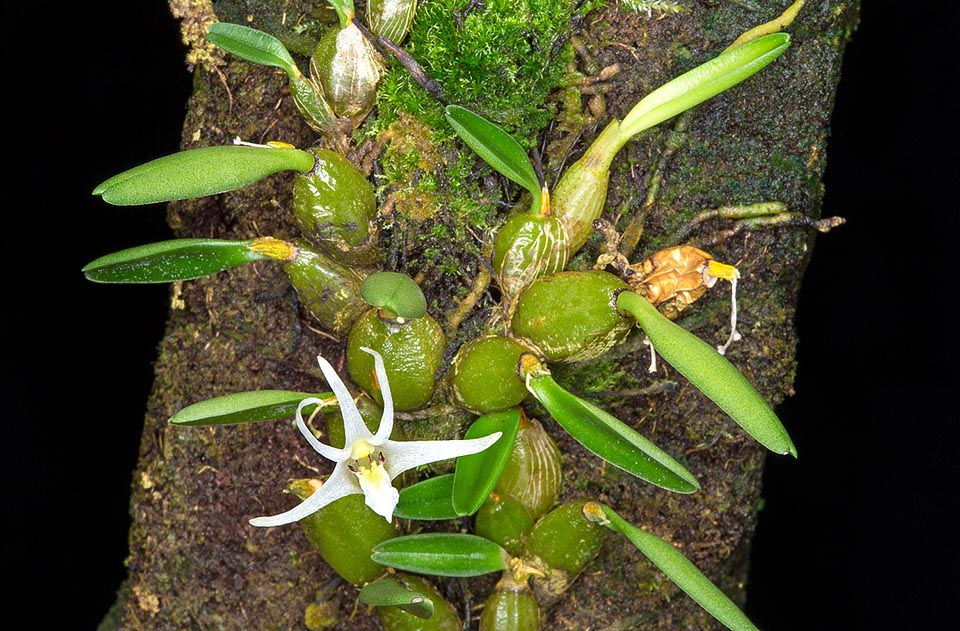Family : Orchidaceae

Text © Pietro Puccio

English translation by Mario Beltramini
The species is native to New Guinea where it grows in the humid forests at low altitudes.
The name of the genus is the combination of the Greek substantives “δένδρον” (dendron) = tree and “βίος” (bios) = life, with reference to the numerous species of the genus growing on the trees; the Latin specific name refers to the river Minjem, Madang Province, near which the type species was found.
The Dendrobium minjemense Schltr. (1912) is an epiphytic species with creeping rhizome and close and ellipsoidal pseudobulbs, grooved, about 0,8 cm long and 0,7 cm broad, with at the apex one single oblong leaf with irregularly bilobed apex, about 1,5 cm long and 0,4 cm broad, coriaceous.
Apical inflorescences in succession bearing one single flower, on pedicel and ovary 0,9 cm long, of about 2,5 cm of diameter, of whitish colour with red apices of the lateral lobes of the labellum. Lanceolate sepals with acute apex, 1,2 cm long, the lateral united at the base of the column to form a sort of spur (mentum) with obtuse apex, about 0,3 cm long, linear petals with acute apex, about 1 cm long, trilobed labellum, 1,5 cm long and 0,3 cm broad, with triangular lateral lobes and lanceolate median lobe with acute apex and wavy margins, run by three lamellae up almost to the apex, and about 2 mm long column.

Almost unknown in cultivation, Dendrobium minjemense is a New Guinea epiphyte. Apical inflorescences in succession bearing one about 2,5 cm single flower © G. Mazza
On the base of the climate characteristics of the origin area the most appropriate location is that of a semi-shaded and aerated greenhouse with medium-high temperatures, 22-32 °C, with lowest values not under the 18 °C, and high relative humidity, 80-85%. Regular and abundant waterings during the growth of the pseudobulbs, slightly more spaced until the vegetative restart, utilizing rain water, demineralized or by reverse osmosis.
It can be cultivated in pots or baskets, with draining and aerated compost based on medium sliced bark fragments, or mounted on small logs, pieces of bark or rafts of cork or of roots of arborescent ferns covered by sphagnum.
The species is reported in the appendix II of the CITES (species whose trade is internationally ruled).
Synonyms: Diplocaulobium minjemense (Schltr.) A.D.Hawkes (1957).
→ For general notions about ORCHIDACEAE please click here.
